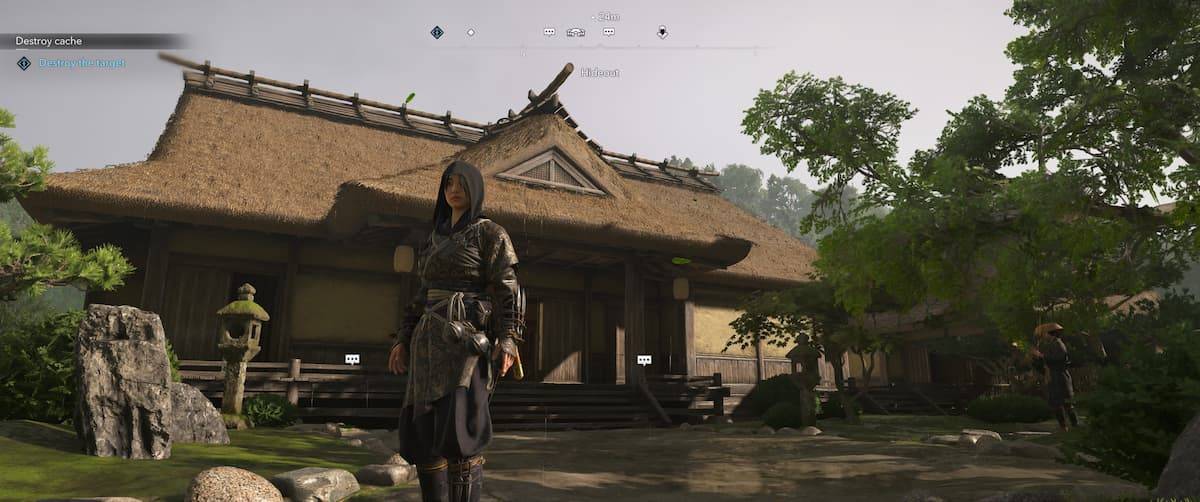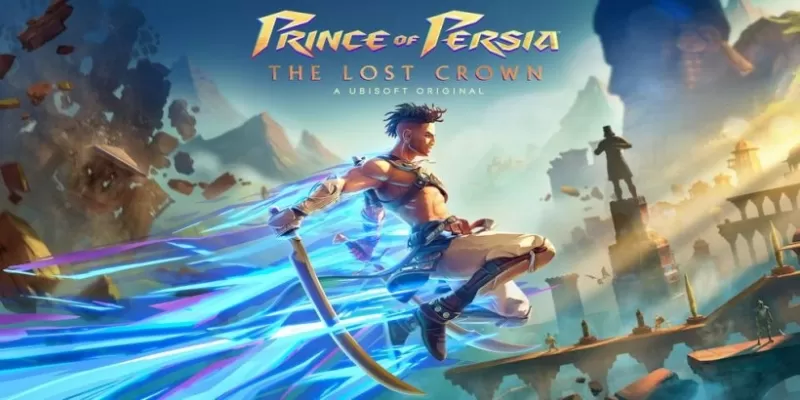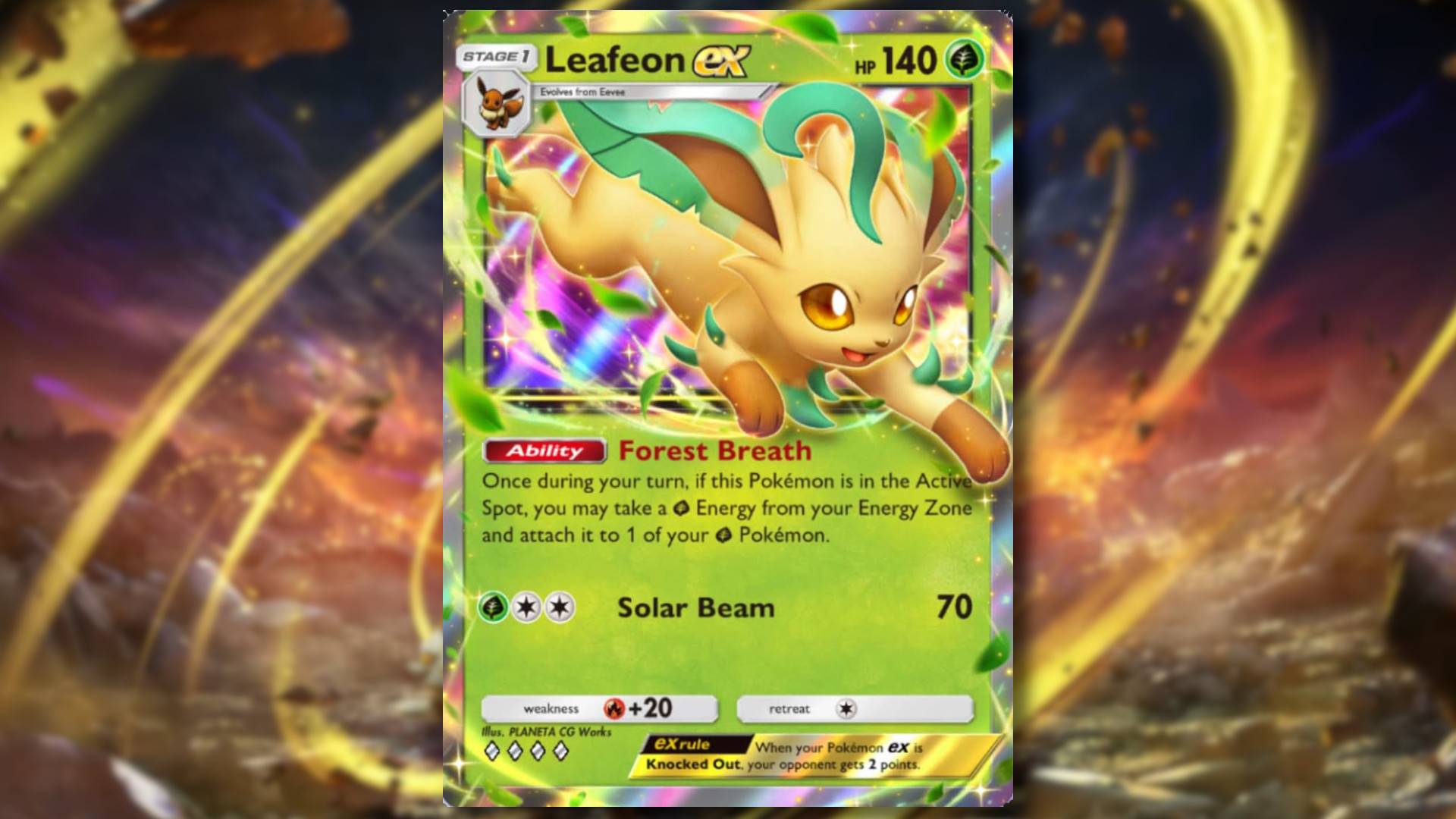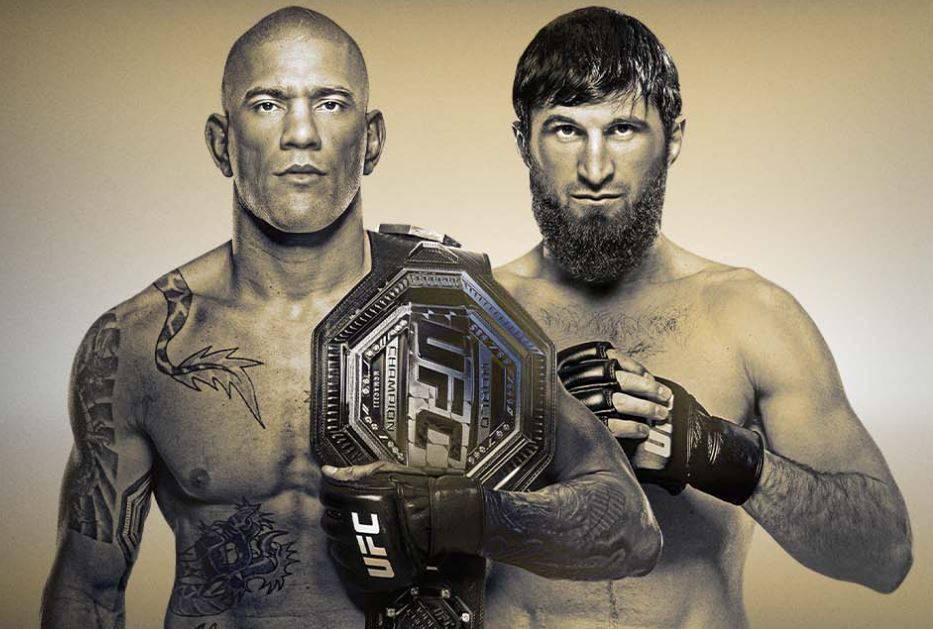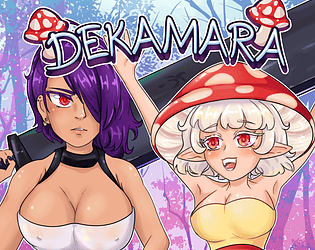With Monster Hunter Wilds shattering Steam records and Resident Evil enjoying renewed popularity thanks to Village and a series of stellar remakes, it's easy to believe that Capcom is currently incapable of failure. However, this wasn't always the case. Less than a decade ago, following a series of critical and commercial flops, Capcom found itself on the brink of collapse, having lost both its direction and its audience.
Capcom was grappling with an identity crisis. Resident Evil, which pioneered the survival horror genre, had lost its edge post-Resident Evil 4. Another flagship series, Street Fighter, was struggling after the lukewarm reception of Street Fighter 5. These setbacks could have marked the end of Capcom and its beloved franchises.
Yet, amidst the turmoil, a beacon of hope emerged. A strategic shift in Capcom's game development approach, coupled with the adoption of a powerful new game engine, revitalized these iconic series. This transformation sparked a period of critical acclaim and financial success, propelling Capcom back into the gaming industry's elite.
Resident Evil Lost Its Way
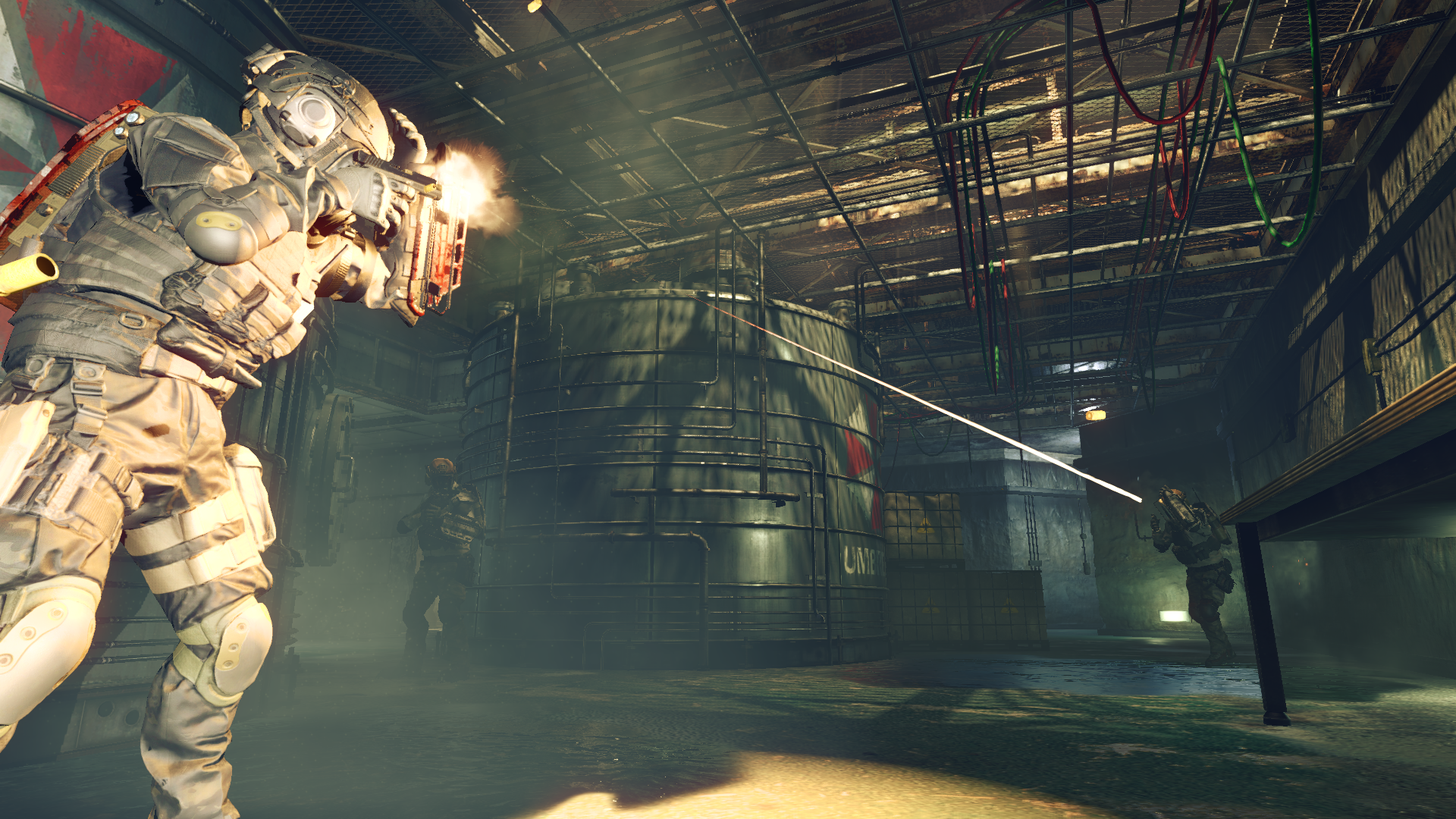 Resident Evil 6 marked a low point for the mainline series. Credit: Capcom
Resident Evil 6 marked a low point for the mainline series. Credit: Capcom
2016 was a challenging year for Capcom. The major Resident Evil release, Umbrella Corps, an online co-op shooter, was met with harsh criticism from both reviewers and fans. Meanwhile, Street Fighter 5 disappointed long-time fans with its lackluster execution and limited content. Dead Rising 4, featuring the return of Frank West, became the last new entry in its series.
These setbacks were part of a broader period of struggle for Capcom since 2010. The mainline Resident Evil games faced declining critical reception despite robust sales. Street Fighter was faltering, and other key franchises like Devil May Cry were absent from the scene. Although Monster Hunter was a huge success in Japan, it struggled to gain traction internationally.
"Many of us started feeling that what the fans and players wanted from the series was getting a little bit separate from what we were making,” Capcom's developers noted. This disconnect was a stark contrast to Capcom's current status. Since 2017, Capcom has consistently delivered hit games from its most renowned franchises, earning both sales and accolades. The lineup includes Monster Hunter World, Devil May Cry 5, Street Fighter 6, and a trio of top-tier remakes, along with an acclaimed soft reboot of Resident Evil. Capcom's recent success is the result of more than just learning from past mistakes; it required a complete overhaul of their strategy, from targeting specific player demographics to adopting cutting-edge technology.
IGN sat down with four leading creatives at Capcom to explore the company's dramatic turnaround. Founded in 1979 as a maker of electronic game machines, Capcom rose to prominence in the 80s and 90s with 2D hits like Street Fighter and Mega Man. The transition to 3D gaming with titles like Resident Evil was pivotal, culminating in the creation of one of the greatest games of all time, Resident Evil 4, in 2005.
 The GOAT Resident Evil game? Credit: Capcom.
The GOAT Resident Evil game? Credit: Capcom.
Resident Evil 4 is celebrated for its innovative blend of horror and action, inspired by classics like Friday the 13th, H.P. Lovecraft, and John Carpenter's films. However, subsequent games lost this balance. Resident Evil 5 featured over-the-top action sequences, like Chris Redfield punching a car-sized boulder, deviating from the series' horror roots.
This confusion in direction led to Resident Evil 6 in 2012, which tried to cater to both action and horror fans but failed to satisfy either group fully. Similarly, Street Fighter struggled to match the success of Street Fighter 4 with Street Fighter 5, which was criticized for its lack of single-player content and poor online functionality.
Other Capcom franchises faced challenges as well. Devil May Cry saw diminishing returns, leading to the outsourcing of DmC: Devil May Cry to Ninja Theory. While it gained a cult following, its reception was mixed, prompting a hiatus for the series. Attempts to appeal to Western markets with titles like Lost Planet and Asura's Wrath fell short, though Dragon's Dogma emerged as a bright spot.
Street Fighter 5, The Lost Cause
 Street Fighter 5 was a let down. Credit: Capcom.
Street Fighter 5 was a let down. Credit: Capcom.
By the mid-2010s, Capcom initiated a series of strategic changes to reverse its fortunes. The first step was addressing the issues with Street Fighter 5. Directors Takayuki Nakayama and producer Shuhei Matsumoto were tasked with stabilizing the game. Despite not being part of its initial development, they inherited a game that needed significant improvements to regain fan trust.
"There definitely were some challenges within the production of the game, and that was part of the reason why I was brought into the team," Nakayama explained. The development constraints limited what they could achieve, but their focus was on fixing the most pressing issues while laying the groundwork for Street Fighter 6.
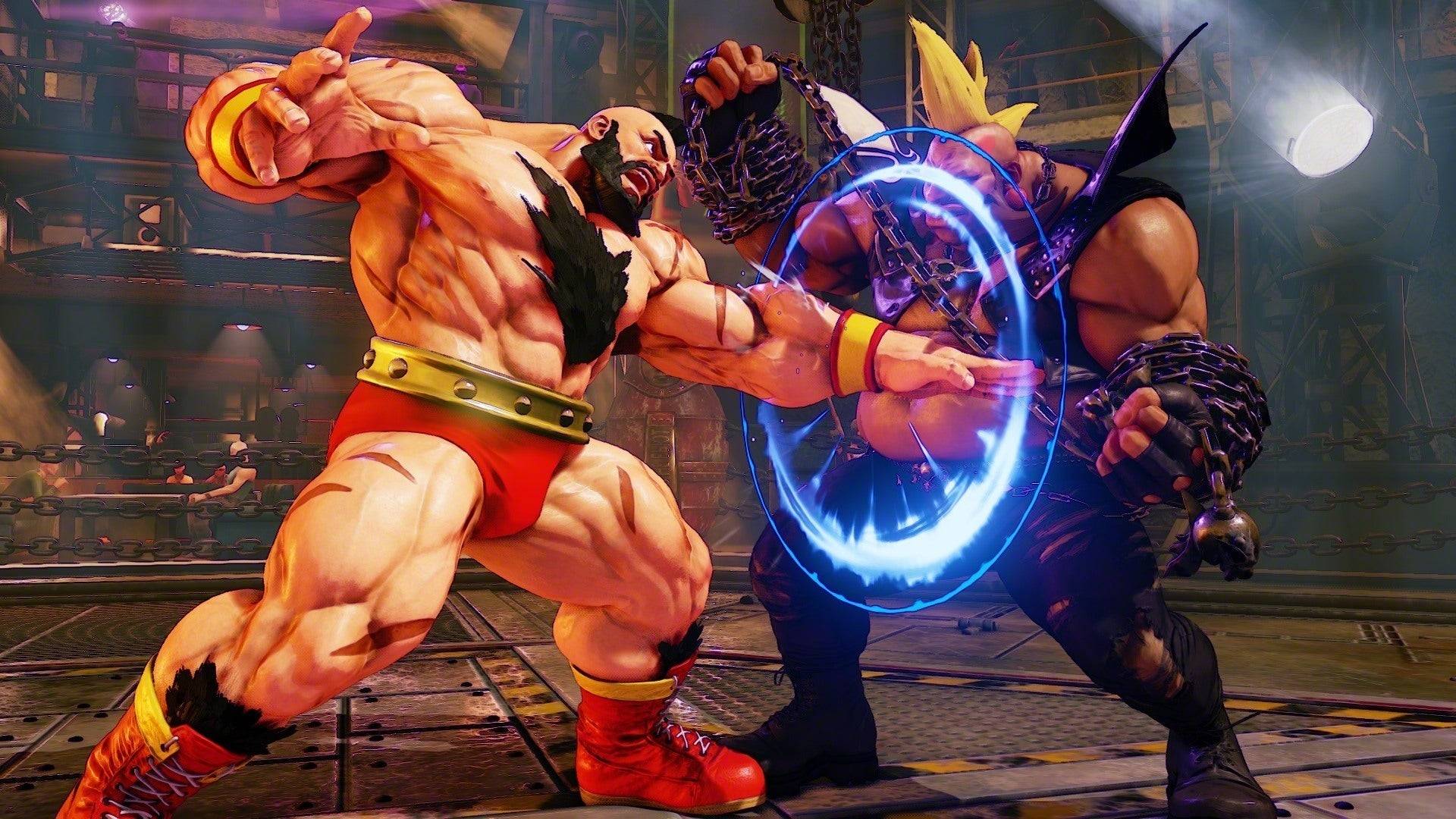 Street Fighter 5 would be improved into Street Fighter 5: Arcade Edition. Credit: Capcom.
Street Fighter 5 would be improved into Street Fighter 5: Arcade Edition. Credit: Capcom.
"We just didn’t really have enough time to address some of the problems and challenges we faced in Street Fighter V," Nakayama admitted. "And so, with our hands tied behind our backs, we basically had to wait for those ideas to be brought back for the initial conceptual phases for Street Fighter 6, so we could tackle and do things properly for the next title."
Matsumoto emphasized that abandoning Street Fighter 5 wasn't an option. Instead, they used it as a testing ground to refine ideas for Street Fighter 6. "While we were working on Street Fighter V, we were trying to figure out what we really wanted to do in Street Fighter 6 content-wise," he said.
The team's efforts on Street Fighter 5 led to numerous updates, from netcode improvements to new characters and mechanics like V-Shift. The goal was not just to elevate the game but to rediscover the fun in fighting games. "We both realized that fighting games are fun, and when you get used to them, it becomes more enjoyable and something you can essentially play forever as long as you have an opponent to play against," Matsumoto noted.
Street Fighter 6 adopted a more inclusive approach, providing tools for new players while maintaining the depth that veteran fans loved. By sticking with Street Fighter 5 and using it as a testing ground, Capcom was able to launch Street Fighter 6 as one of the most critically acclaimed entries in the franchise.
Monster Hunter Took Over The World
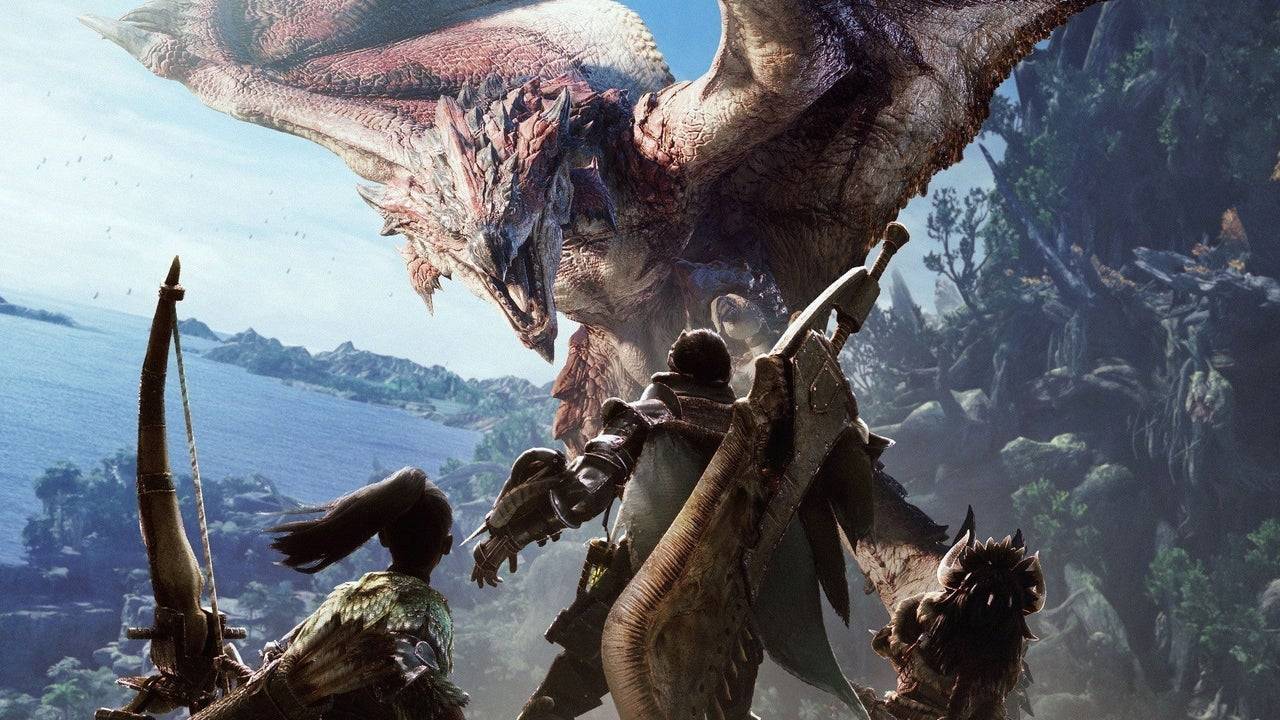 The start of the Monster Hunter revolution. Credit: Capcom.
The start of the Monster Hunter revolution. Credit: Capcom.
Around the time of Street Fighter 5's launch in 2016, Capcom underwent an internal reorganization to prepare for a new generation of games, powered by the RE Engine, a replacement for the aging MT Framework. This change was about more than just tools; it was about creating games for a global audience.
"It was a few factors that came together," said Hideaki Itsuno, known for his work on Devil May Cry. "The change of the engine and also all teams were given a very clear goal at that point to make games that reach the global market. [Games] that are fun for everyone."
Capcom had previously tried to capture the Western market with action-heavy titles like Resident Evil 4 and Umbrella Corps, but these efforts were largely unsuccessful. "I think that we had that clear goal of just focusing and not holding anything back towards making good games that would reach people from all over the world," Itsuno added.
The shift in focus was pivotal, and Resident Evil 7's launch in 2017 marked the beginning of Capcom's renaissance. No other series embodies this new goal of global success better than Monster Hunter. While the series had a dedicated fanbase in the West, it was significantly more popular in Japan, largely due to the success of handheld consoles like the PSP.
"20 years ago in Japan, having a network connection wasn't as easy, and there weren’t a huge amount of people playing Monster Hunter online. However, handheld consoles made multiplayer gameplay easy without internet access," explained Ryozo Tsujimoto, the series' executive producer. This approach inadvertently reinforced Monster Hunter as a "Japan-only" brand.
As the Western world's internet infrastructure improved, Capcom saw an opportunity to launch a more globally accessible Monster Hunter game. Monster Hunter: World, released in 2018 on PlayStation 4, Xbox One, and PC, was a game-changer. It delivered large-scale, AAA action with enhanced graphics and expansive areas.
"Our approach to the globalization of the series and Monster Hunter in general really ties into not only the themes that we had going into designing the game, but also in the name of the game," Tsujimoto revealed. "The fact that we called it Monster Hunter: World is really kind of a nod to the fact that we wanted to appeal to this worldwide audience that we wanted to really dig into and experience Monster Hunter for the first time."
Monster Hunter: World was released simultaneously worldwide, without region-exclusive content, aligning with global standards. Focus tests across the world helped refine the game's systems, such as showing damage numbers, which broadened its appeal and led to unprecedented success. Both Monster Hunter: World and its follow-up, Monster Hunter Rise, sold over 20 million copies each.
"At its heart, Monster Hunter really is an action game, and that sense of accomplishment you get from really mastering that action is an important aspect of Monster Hunter," Tsujimoto explained. "But for newer players, it's really about getting to that point. The steps involved in getting to that sense of accomplishment is what we're trying to strategize for, in terms of designing for new players."
Resident Evil 7 Began Turning Things Around
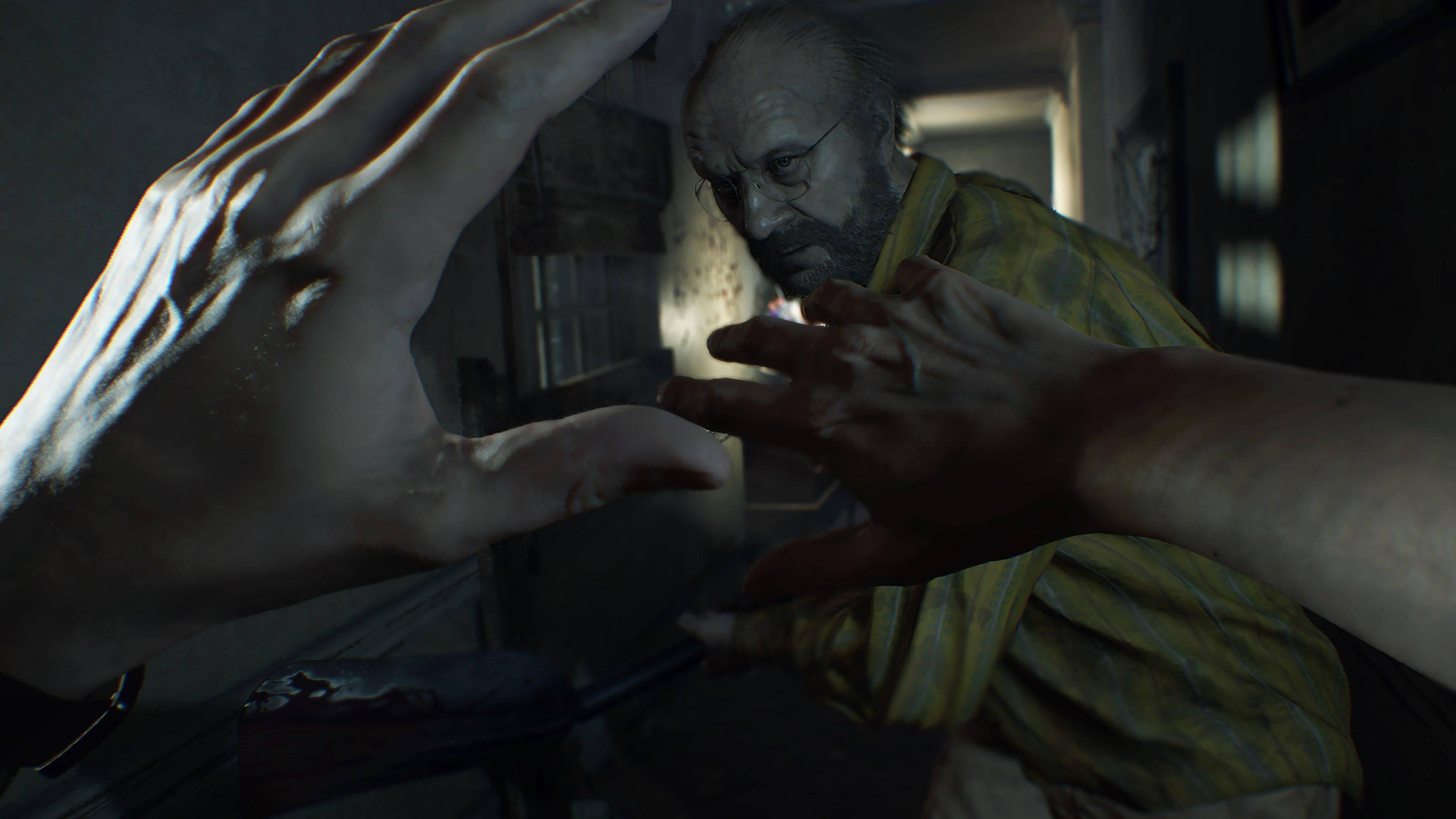 Welcome to the family. Credit: Capcom.
Welcome to the family. Credit: Capcom.
Monster Hunter had a winning formula, but convincing global audiences to try it was challenging. For Resident Evil, the decision was made to return to its survival horror roots, as decided by executive producer Jun Takeuchi.
"It was around the time I was working on Resident Evil Revelations 1 and 2. I was trying to test different things, try different approaches," recalled Yasuhiro Ampo, director of Resident Evil 2 and 4 Remakes. "And around this time is when the R&D teams were divided into R&D division one and two. The executive producer of the Resident Evil series, Jun Takeuchi, took command of R&D division one, and he set the core direction that the Resident Evil series needed to go back to its origins, to its roots."
Takeuchi's decision to focus on survival horror paid off. Resident Evil 7 was announced at PlayStation’s E3 2016 conference with a first-person perspective, returning the series to its terrifying roots. "With Resident Evil 7, the executive producer, Jun Takeuchi, made it clear that we cannot underestimate how critical it is for the series for it to be scary and about survival," Ampo said.
The game was a hit, praised for its return to survival horror and its unsettling southern gothic setting. Capcom continued to cater to fans with third-person remakes, starting with Resident Evil 2, which became the second best-selling game in the franchise.
Despite initial hesitation, Capcom also remade Resident Evil 4, fine-tuning the balance between action and horror to maintain the series' survival horror essence. The Resident Evil 4 remake was another success, praised for its darker tone and refined gameplay.
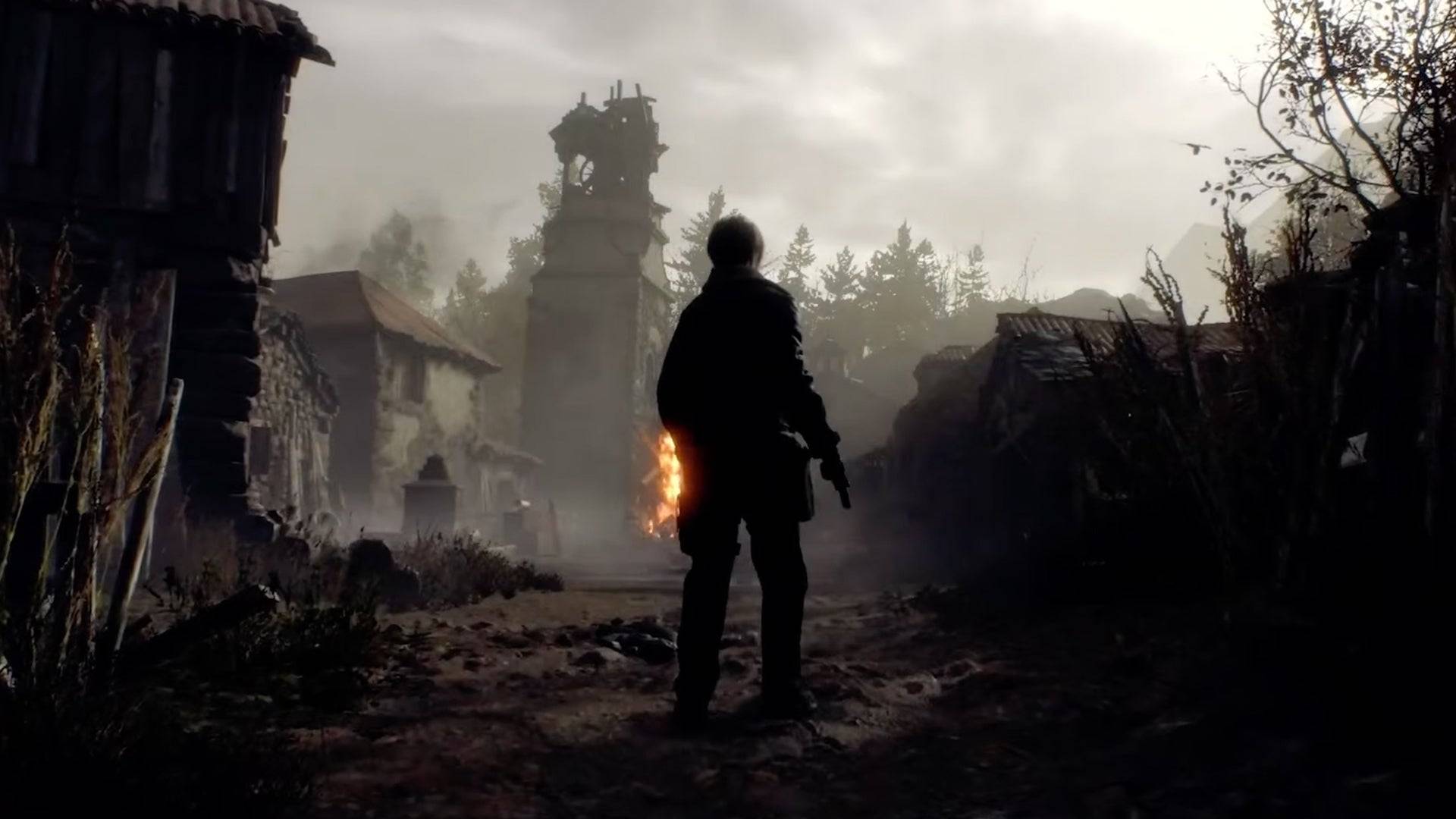 Horror reborn. Credit: Capcom.
Horror reborn. Credit: Capcom.
At the same time, Devil May Cry director Hideaki Itsuno aimed to reinvigorate the action genre with Devil May Cry 5. After a decade away from the series, Itsuno returned with a vision to create the "coolest" action game, leveraging the new RE Engine's capabilities.
The Reason Behind The Change
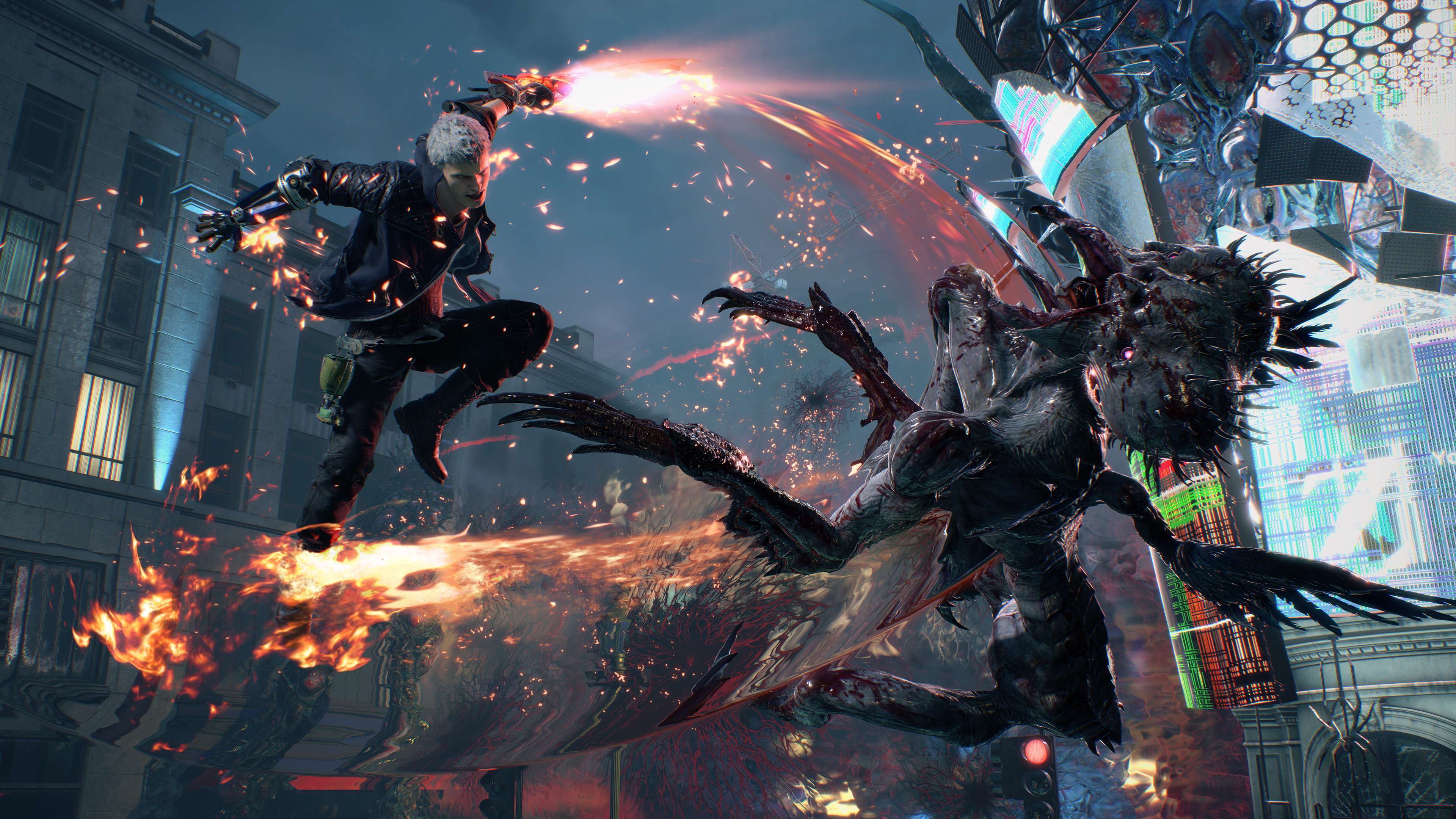 The goal? Make the coolest game ever. Credit: Capcom.
The goal? Make the coolest game ever. Credit: Capcom.
"I felt like the main trend with action games was to make action games that were very kind," Itsuno admitted. "Maybe, for me, a little bit too kind to the players, lending a hand to the player too much to my liking."
The RE Engine's ability to handle photorealistic assets and its flexibility allowed Capcom's developers to implement changes quickly and effectively. "So the original concept for the RE Engine was to allow for a development environment that was less stressful and could help us to make things quicker," Ampo explained. "Because it’s an internally developed engine, when we needed any additional tools, well, we could ask for them internally."
For Itsuno, the RE Engine was crucial in achieving his goal of making Devil May Cry 5 the coolest action game possible. "Devil May Cry is a franchise that stands on being cool," he said. "That’s what the franchise is, it’s about being cool. Ever since I took over the series from Devil May Cry 3, I put everything that I, as a person, I considered throughout my life to be cool."
A New Capcom Golden Age
Since 2017, Capcom has consistently released game of the year contenders, achieving a remarkable streak of 10 critically acclaimed games in less than a decade. This success stems from a focus on creating globally appealing games using the advanced RE Engine, which supports a variety of genres seamlessly.
Capcom's commitment to maintaining the unique identities of its franchises while expanding their global reach has been key. "Capcom is going through a golden era, and, well, now we have to do everything we can so that this lasts one more year, one more year, and every year, one more year," said Tsujimoto.
While many of Capcom's contemporaries struggle to find consistency, Capcom's strategic changes have ushered in a new golden age. "It’s a very exciting time to be at Capcom right now. A lot of us are able to get excited about what we’re working on and are able to focus on things that we think are fun," Nakayama added.
Capcom's journey from near collapse to its current golden era is a testament to the power of strategic reinvention and a commitment to delivering games that resonate with a global audience.









 LATEST ARTICLES
LATEST ARTICLES 